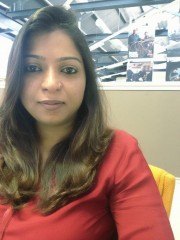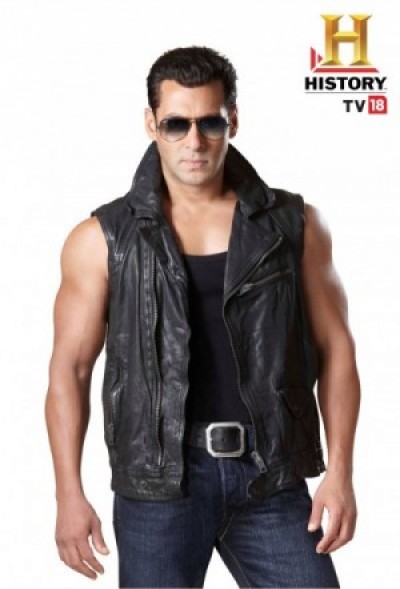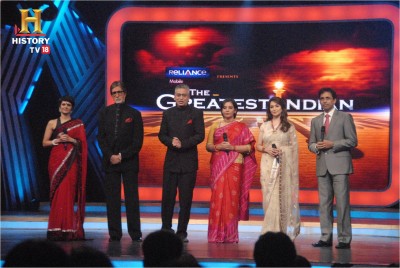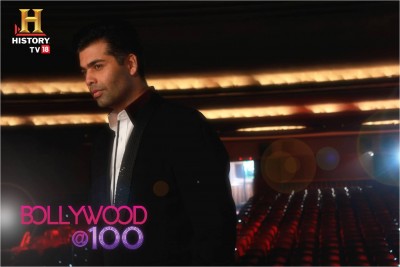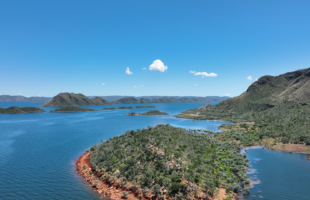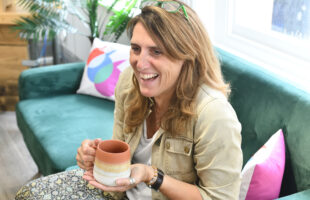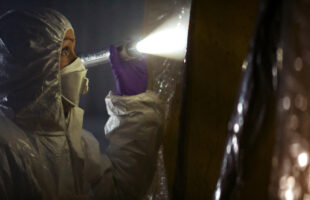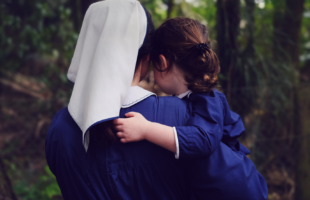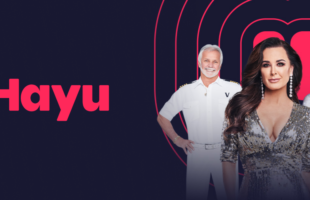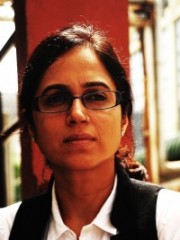
India’s TV18, part of the Network18 Group, formed a joint venture with A+E Networks known as A+E Networks | TV18. The JV operates the channel HISTORY TV18, which launched in India in October 2011. TV ASIA Plus spoke to Sangeetha Aiyer, VP & Head Marketing, A+E Networks | TV18, and Ritu Kapur, Head Programming, A+E Networks | TV18.

Ritu Kapur Sangeetha Aiyer
Q: How has HISTORY performed thus far?
A: Come October, we would’ve completed two years since launch. It’s been a really good journey for the channel in this space in the country. When we forged the JV with A+E Networks and were launching HISTORY TV18 in India, we were very clear that the first thing we wanted to achieve was to basically grow the genre. Since the launch of HISTORY, the factual entertainment genre has actually grown by over 30% – which means that with the launch of HISTORY, the new sampling has garnered traction to the genre.
Our cumulative reach since launch is over 70 million viewers. On an average weekly basis, we reach anywhere between 20 to 30 million viewers. With analogue now moving to digital, our connectivity is approximately 55 million households. In that sense, we’re really, in what we call, the tier 1 pay of the factual genre, competing very clearly with the other two legendary players – Discovery and Nat Geo.
That’s as far as our reach with the TV sector goes for the genre. HISTORY has also done exceedingly well on various social media platforms. In fact, it leads the genre in the country. With that traction of social media, we have more than 1.3/ 1.4 million Facebook fans. We connect with fans on various shows, on content, on success stories, everyday happenings. We have about 42,000 Twitter followers and the interactivity we see on Twitter for HISTORY is very high.
HISTORY has carved a special place for itself within the factual genre, which is dominated by a certain kind of programming, majorly led by wildlife and survival. HISTORY has managed to introduce a different programming mix with greater emphasis on fact-based content, fact-based entertainment and new formats that appeal to a wider audience. HISTORY TV18 has had the highest time-spent for viewers in this genre since launch.
We came into the market repositioning factual as a genre because we came with a big film star, Salman Khan, introducing the entire action-thrill idea on factual. Salman was the face of HISTORY TV18 during the all-important launch phase. Immediately, that has helped us reach a wider audience. It completely repositioned HISTORY within the factual genre for us – which is very important as HISTORY had been in the market earlier, and a pure history play had not worked. We were able to completely communicate a brand promise which we then lived up to.
Bollywood actor Salman Khan
The other thing that worked for us very well again is character-driven shows. Characters drive a lot of the action for us, like the characters from Pawn Stars. The character has been very big for us because the very thought of ordinary people doing extraordinary things has really set the channel apart from the other channels in the same space. Discovery has survival (content) and Nat Geo has positioned itself with documentaries.
There are other things we brought into the space, like food. We were able to position food in a different way than it already existed within the country on TLC and FOX Traveller. We take a completely different factual approach to even smaller genres like food. Another thing is localisation – which is big for the factual genre here.
We came in with even more languages, to reach out to a wider audience. We’ve also taken localisation to another level with a lot of our local tentpoles. Our big tentpole programming on the channel consists of local initiatives. We’re already on our third tentpole search. The first one was The Greatest Indian. The second was when the country was celebrating hundred years of cinema – and we did a big, star-driven exercise, Bollywood@100, which was hosted by celebrated filmmaker and TV host Karan Johar. The tentpoles are the big buzz creators for the channel even though it’s a channel that’s largely on international content. The big talking points have been from India and have a huge connection to India, and yet, it’s a factual approach to that content.
The Greatest Indian
Q: Which genres have done well for India?
A: The big genre that has worked for us is of course artifactual, with Pawn Stars leading. Also, we are following the international trend and introducing scripted content. We’ve already had two runs of The Kennedys.
Scripted is a space we’re experimenting with. It is early days for us. We have to see how it does, what kinds of responses we’re getting – do audiences who come in for pure factual enjoy international scripted shows? Of course, the quality of dubbing etc will have to be that much more fine-tuned for scripted. We are aware of that and we are working towards that. When I say artifactual, I mean multiple characters, ordinary people engaged in some unusual activity, in a reality format. That’s the broader genre that’s working for us, I would say – character-driven reality of which artifactual has been really successful.
We’re launching Duck Dynasty which is a really successful show in America. On pay-TV, it’s the No. 2 show. Season 3 saw a reach of nine million viewers on day one of the show. We’re bringing that on HISTORY TV18 because it’s a very unusual show.
Another sub-genre that works for us is something that is bizarre and superhuman. It may not be from the A+E catalogue but as a sub-genre, shows like Superhumans and Daredevils bring in adventure and adrenaline as well. These shows, as a sub-genre, also work for us.
The other genre that has started doing really well for us is aliens, with a bit of magic. This whole space of aliens, illusion and magic, the unknown basically, is doing really well for us.
Q: Outside of India, food is a genre that’s not really connected to the HISTORY brand. How is that working out for you?
A: For about a year, we had a really fabulous response to our food content. We had a show from the A+E catalogue, which was a huge success, which we followed up with an India series which we produced.
But since then, we have been struggling because we’re looking for content in the food space that isn’t a cooking sketch, or like a Nigella Lawson. We’re reaching out to a largely male audience. We’re largely male-skewed. So, we’re looking for an approach to food which is not necessarily cooking, flavours and exotic recipes.
The challenge we’re dealing with is finding content in the larger food space which fits into our brand as HISTORY. We’ve had a good success with food but as for right now, we’re looking for content that works for us to keep that space alive.
Q: Could you give me a sense of your core audience for HISTORY in India?
A: We target and reach out to 15+ years with the core being 15 to 40 years. We also reach out to a socio-economic group which we call SEC A and B, and markets with a population of one million plus. This is the core audience.
HISTORY in comparison tends to be a younger channel. We skew 15-30, and we also reach out to urban audiences a lot more. We tend to reach out to SEC A a lot more than B, in that sense. But for us, the core audience is really 15+ going on to 30-35 years, SEC A, B with one million plus markets.
We have a gender skew of 60% coming from males. Factual does talk to male audiences a lot more. We get about 35 – 40% from females but the gender does skew mainly in terms of positioning and the kinds of content, etc.
Q: I guess that’s quite consistent with the HISTORY channels around the world.
A: Absolutely and the genre around the world too. Just that our audiences are younger.
Q: Which makes the introduction of food a little tricky since you’ve mentioned that a lot of the popular food titles are the “Nigella Lawson” type which tend to be more female skewed.
A: For us, it’s more of the character-driven reality including the artifactual – the daredevilry, the superhuman. We have illusion, aliens and the unknown, and we’ve been getting a tremendous response to Mankind. Earlier, a similar show – America, The Story of Us did very well for us as well. I think there is definitely an interest in core history if told well.
Q: What about your localisation strategy, and what kind of output in terms of number of hours are we talking about?
A: We’ve always looked at localisation from a relevance and context perspective rather than the perspective of filling up the number of hours. We have enough research that has indicated that it’s very important that whatever the localisation we do, it’s absolutely necessary that it sits with the overall ambience of the channel plus what the channel stands for.
Given that, I think our first initiative, The Greatest Indian, which is based on the BBC format The Greats, was extremely apt. We were able to tap into a much wider audience and we had 20 million votes, 25 million viewers interacting and watching the show. I think there are two things we look at when we look at localisation as a strategy: what is the relevance to the channel and whether there is enough scale.
Similarly, we had Bollywood@100 which was the centenary celebration of Indian cinema. We looked at similar benchmarks critically as well as from the viewers’ perspective. We also do smaller special-interest shows from a local perspective, we did Saving the Ganga, and we are following that up with another show called Saving the Western Ghats, which will be airing on the channel soon.
Bollywood@100 host Karan Johar
I think we always try to strike the right balance between whether it sits in with the overall scheme of things with HISTORY and whether it has the potential ability to break through the clutter and make enough noise.
Both tentpoles and our upcoming third one have a 360 degree approach. We have taken the whole interest in factual beyond TV into interactivity in terms of a ground event, or in terms of social media. For The Greatest Indian, one of the reasons we picked that format is because it has online votes. Similarly, for Bollywood@100, while the TV end looked back at what went into making 100 years of cinema, celebrating the legends and the greatest films, we kept the social interactivity far younger. So for both the tentpoles, we are able to reach out to our audiences on many levels and bring in new audiences, including audiences who are not core factual audiences. We bring new audiences into our viewership as well.
I really think what HISTORY has done is actually create some sort of bridge for us in India between what a general entertainment channel offers and what a factual infotainment channel offers. It takes it one step closer. The host of Bollywood@100, Karan Johar, is a big film director and a big TV host and he would typically be on a general entertainment channel. But he’s here, and he brought in information. He was talking about the history of cinema but just by being who he is, he got a lot of non-factual viewers to come in and sample us, and then stay on to watch a lot of our other content.
Q: How does TV18 fare at primetime when pit against local channels?
A: Clearly in India, there’s no competition against a Hindi general entertainment channel, because that’s where the mass audience is going. But as we are seeing, there is a clear trend towards niche viewing. There is a dedicated niche audience for factual, it grew once factual started languaging .
This audience comes in and we find that the Hindi general entertainment channels are far more female skewed, the remote is in the hands of the women in the house, but in later primetime around 9.30 – 10pm, it’s the male in the house who takes over and there is, we’re told, a fair amount of co-viewing at that time for factual content.
There are a couple of realities to the TV space for India as a market. Unlike our Western counterparts, general entertainment, which is a mix of Hindi and regional general entertainment like Telugu and other languages, constitutes almost 55% of all TV viewing. In comparison, about 3 years back, factual formed about 0.5% and this 0.5% has managed to grow to almost 2%, which if you look at in terms of absolute viewership terms, is a huge leap.
So it’s not comparable, and you can say it’s very difficult to get the appointment viewing that happens for a local general entertainment channel. To shift that appointment viewing to HISTORY or to factual as a genre is difficult because of what general consumption tends to be.
The positive for us is to see this 0.5% becoming 2% and slowly, we believe that there is scope to make this a double digit number, and then we’re talking big numbers. The genre has grown by 30% and as we keep experimenting with new formats, HISTORY has somehow managed to be that bridge between local general entertainment and what people perceive as foreign content and being extremely informative and educative in nature. HISTORY has somehow carved that spirit and we want to grow in that space a little more.
With digitisation, we discover that we’re going to be in the basic pack. We’re going to be in the must-have package, together with the Hindi and regional general entertainment channels. The demand is clearly there for us, otherwise why would we make it to that pack? The English GECs, with programmes like Star Wars, are going to be in the platinum bracket. When you’re in the basic pack – the same space as a local GEC, you will see a larger sampling and eventually we’ll grow the genre and viewership for the channel.
Q: Is the strategy then to always have HISTORY as part of the basic package?
A: Yes, I think most of the deals are done and HISTORY across cable and digital is included as a basic package. We just concluded phase 1 of digitisation and phase 2 is on. As we conclude phase 1 of digitisation, the packaging is now getting sorted. Once packaging comes into play, you’ll see that as a strategy, HISTORY is in the base pack.
Q: Is content piracy a concern for HISTORY?
A: Not really. In fact, some of the content being available on YouTube has actually been a win-win for us as a lot of audiences sample a little bit of that content and they come in and demand for more HD viewing and they want it on the channel. Piracy is a huge concern for the English general entertainment channels. Before Homeland releases in India, audiences are already watching it online.
Q: Are there issues with set-top boxes?
A: The issue is not really the set-top box per se. The whole digitisation mandate in the country was a huge leap as far as technology and the viewing habits and what consumers are used to. When there was the pressure of a deadline, what actually happened was that the big cable operators would first feed in the box. That was their main aim. You want subscription, and you then go into packaging, and then you decide who’s going to pay how much for how many channels. Going through this the linear way, there have been some issues with the way it has been executed.
Having said that, the boxes have been seeded. Currently, there is this whole data mining exercise that’s happening there, and all cable operators have put up ads and you have to send in the subscription form and indicate the kind of package and your preference for TV channels. For one of my TVs which I’m subscribed on cable digital, I haven’t been given a subscription form nor any communication to ask for a form, and I was not in any package. So if I was getting 100 channels on the analogue mode, suddenly in digital mode, I was getting 300 channels all at the same price of analogue.
That is why there is so much chaos even in viewership behaviour and in certain channels reflecting numbers. I think the whole subscription exercise is being completed and once that’s completed, packaging will come into play.
The other thing that was a hitch in the entire digitisation process was that most of the big cable guys, unlike the DTH players who were well-prepared from a technical perspective, were still new to the entire technical process of packaging, the menu, etc. So there was still a little bit of chaos in that sense but all of these issues are getting ironed out. In a couple of months, we should see packaging kick in and then we will see the real viewing is going to start coming into play.
Q: Can you introduce your upcoming plans for the channel beyond Duck Dynasty?
A: Beyond Duck Dynasty, we’ve got several shows which are we keeping this space alive with, Pwan Stars of course is a must-have and a staple on the channel. We have things of recreation, and in the space of gambling for artifactual space, we’re bringing in Baggage Battles and Shipping Wars. We have this space completely marked out right now. We have also introduced natural history. Ancient Aliens has seen success and the other space that we have had success with recently and that we’re introducing more is real-life factual, we had a show called Accidental Heroes, which did very well. We followed this with shows called Hostage Do or Die and Extreme Prison Break. We’re looking to acquire a few more shows in the space that’s worked well for us – bringing in the emotional quotient as well. And as we mentioned before, illusion and magic – we have Dynamo, and we have a magician coming in.
The main stay is that with artifactual, we’re getting much more aggressive with the superhuman and daredevilry space. We’re getting more shows to keep that space alive. We’re also bringing Vikings by the end of the year and The Bible next year, and we have our eyes wide open for other scripted content that works well for our brand. Within the next few months, we would have zeroed in on what our next big local tentpole will be.
Another space that we find has worked well for us is science. We have Intervention which has done well. We have a big new show called Science Impossible coming in. We have another show called Brave New World, so we have science on the channel as well, which complements the reality real-life magic content very well.


